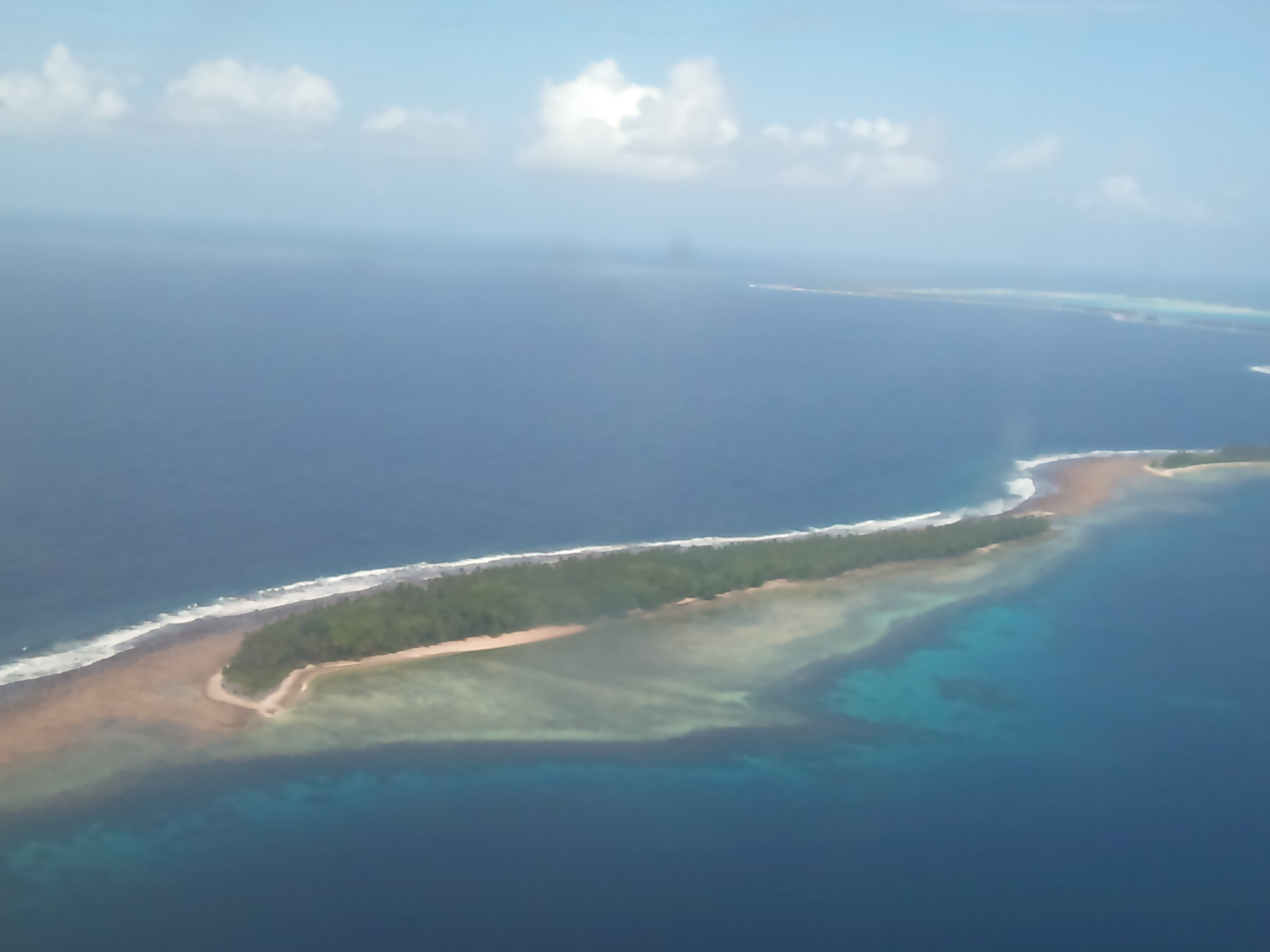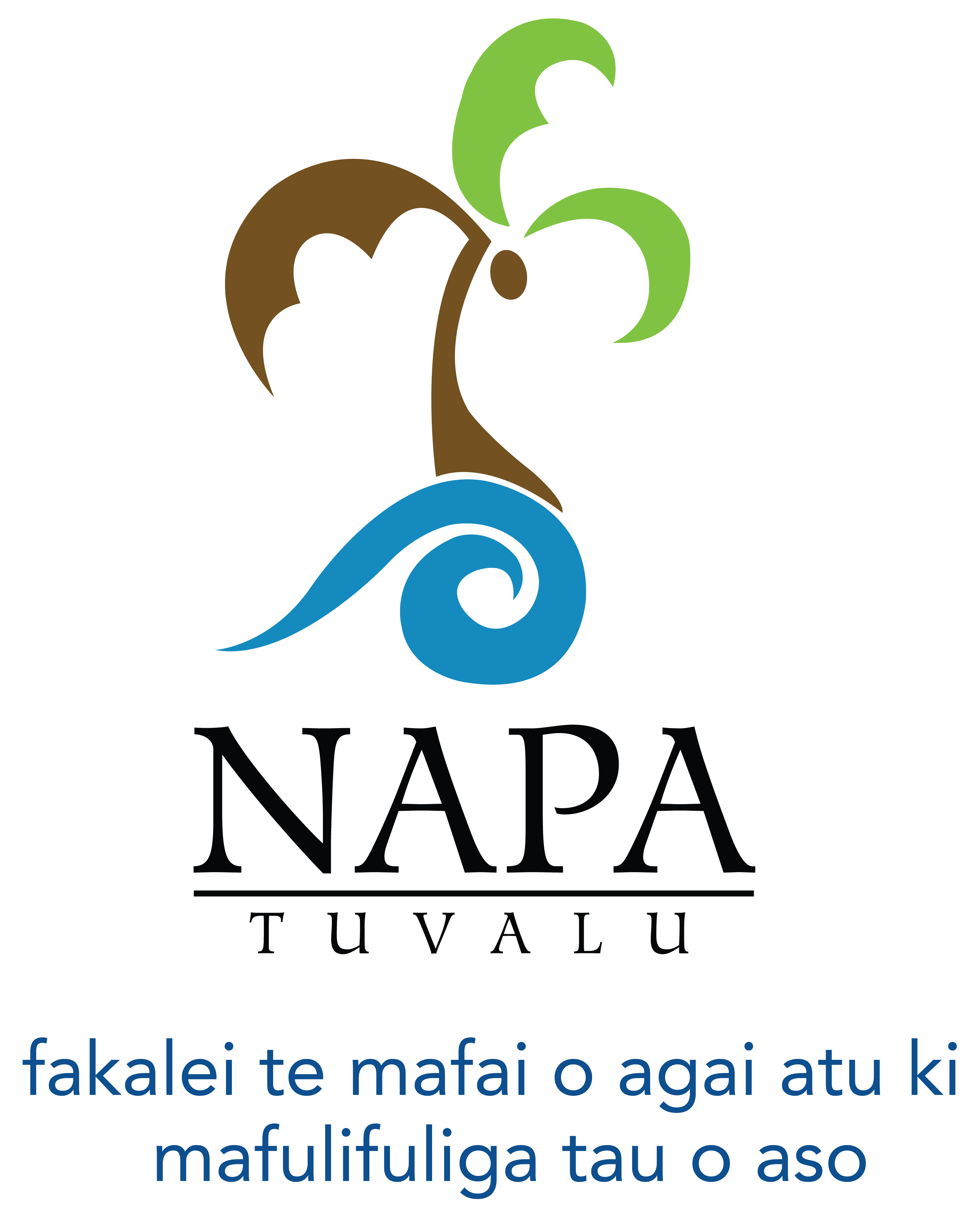Tuvalu National Adaptation Programme of Action (NAPA)
Project Overview
National Adaptation Programmes of Action (NAPAs) provide a process for Least Developed Countries (LDCs) to identify priority activities that respond to their immediate needs to adapt to climate change, ultimately leading to the implementation of projects aimed at reducing the economic and social costs of climate change.
Climate Related Hazards
- Salt water intrusion
- Coastal zone inundation
- Drought and low flows
- Storm surge
- Cyclones
Project Details
Tuvalu is an extremely small, isolated atoll island nation, located approximately halfway between Australia and Hawaii and consisting of widely scattered, low-lying islands. The country rarely exceed 3 metres above mean sea level. At its widest point, Tuvalu only spans about 200 meters. Classified as a least-developed country, the islands contain very few natural resources. The primary economic activities of the country are subsistence farming and fishing; income from foreign aid is an important part of the economy. Tuvalu also sells some stamps, coins and, in the last 10 years, has sold use of their Internet domain “.tv”—an action that contributes a substantial amount of revenue to their overall Gross Domestic Product (CIA, 2011).
With its limited resource base, Tuvalu is extremely vulnerable to the adverse impacts of climate change, variability and extreme weather events. Some of Tuvalu’s adaptation projects include: the development of a disaster plan, the plant-a-tree programme, community water tank projects and seawall construction. Temperatures in Tuvalu range between 26.0 – 32.0 degrees Celsius. The wet season (October – March) brings tropical cyclones which inflict extensive damage on local infrastructure, agriculture and major food sources. The dry season (June – September) is characterised by an increasing number of droughts which contribute to the depletion of freshwater sources.
The main source of freshwater in Tuvalu is rainwater. Groundwater resources are no longer suitable for human consumption due to pollution from saltwater instrusion caused by rising sea levels. Salinity intrusion enhanced by the porosity of soil in Tuvalu has destroyed pulaka crops and decreased the yields of various other fruit trees. Rising sea levels combined with extreme weather events is contributing to the inundation of low lying areas. Coastal erosion is a major problem in Tuvalu, particularly on the western side of the islands. As most Tuvaluans live within coastal areas, additional stress is being placed on the already vulnerable marine ecosystem. Rising sea temperatures are also contributing to coral bleaching and decreasing marine productivity. The marine ecosystem is a vital component of Tuvalu’s economy which is dependent on revenue provided by tuna fishing.
Main Human Vulnerabilities and Livelihood Impacts
- Hydrology and water resources
- Coastal zone and marine ecosystems
- Agriculture, agro forestry and food security
- Human health
- Human settlements and infrastructure
- Reduced agricultural production
- Reduced fishery productivity
- Water shortage and/or groundwater depletion
- Flooding
- Increased disease and/or other health problems
- Infrastructure damage
- Food security
- Displacement of people
- Loss of biodiversity
- Loss of land or degradation
Adaptation Needs and Priorities
- Coastal Areas: Increasing resilience of coastal areas and settlements to climate change.
- Agricultural: Increasing subsistence pit grown pulaka productivity through introduction of a salt-tolerant pulaka species.
- Freshwater: Adaptation to frequent water shortages through increasing household water capacity, water collection accessories,water conservation techniques, and constuction of seawalls to minimize salt water intrusions.
- Human Health: Strengthening of community health through control of vector borne/climate sensitive diseases and promoting
access to quality potable water.
-
Fisheries: Strengthening of community based conservation programs focused on highly vulnerable near-shore coastal shellfishfisheries resources and coral reef ecosystem productivity.
-
Marine Ecosystems: Increase information on the relationship between marine productivity and climate change.
-
Disaster Risk Reduction: Strengthening community disaster preparedness and response potential.
Additional References
Key Results and Outputs
Priority Adaptation Projects
- Increasing resilience of coastal areas and settlement to climate change
- Increasing subsistence pit grown pulaka productivity through introduction of a salt-tolerant pulaka species
- Adaptation to frequent water shortages through increasing household water capacity, water collection accessories, and water conservation techniques
- Protecting community health through control of vector borne/climate sensitive diseases and promoting community access to quality potable water
- Strengthening of community based conservation programmes on highly vulnerable near-shore marine ecosystems
- Strengthening community disaster preparedness and response potential
- Adaptation to near-shore coastal shellfish fisheries resources and coral reef ecosystem productivity
Project Components:
- Project Implementation and Management
- National and community-based activities
- Preliminary Adaptation Activities
- Preparation and Endorsement of the NAPA
Expected Outputs:
- The endorsed NAPA document, submitted to relevant international and bilateral organizations for their consideration
- Tuvaluan and English versions of the NAPA document
- Widespread awareness and acceptance of the NAPA, by Government, the private sector and civil society, assisted by the efforts of key players and opinion leaders





